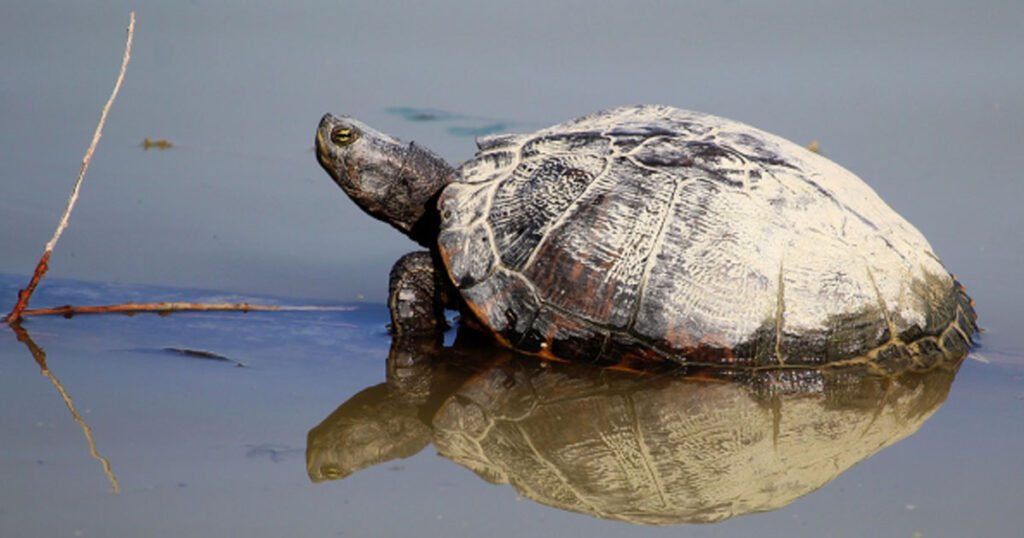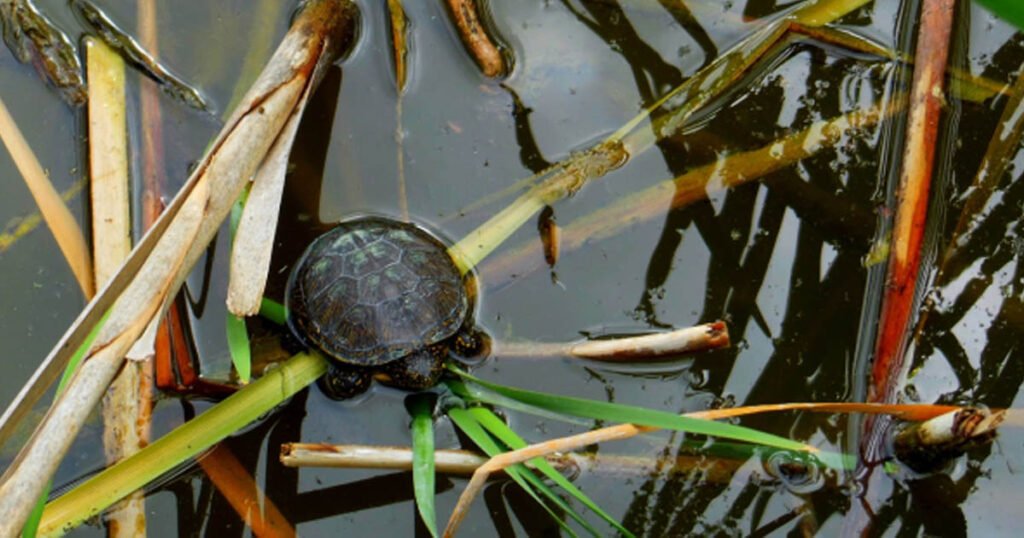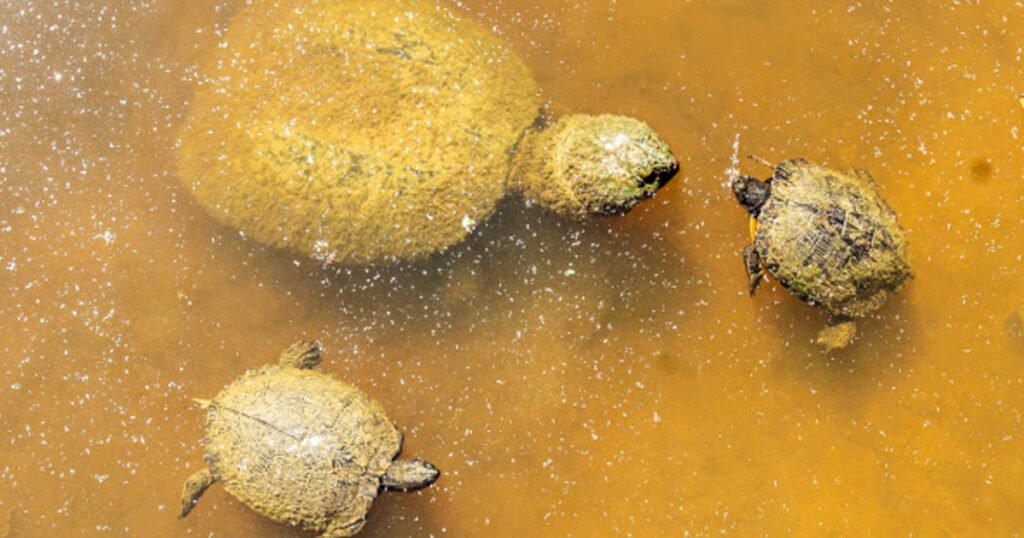Are you a new mud turtle owner or considering having a mud turtle pet? Then you will be curious about what do mud turtles eat. These charming reptiles, native to the Eastern United States, bring a touch of the wild into our homes.
Are you aware of the fact of how long these little wonders can live? It is quite surprising if you didn’t know before – they can live up to 50 years! Their secret to a long, healthy life may lie in their diet. Today, we’re going to explore what do mud turtles eat, and more about mud turtles’ wild and captive preferences. Find out more about their eating habits and how they live by diving into the world of mud turtles.
What Do Mud Turtles Eat: Mud Turtles’ Diverse Diet

The mud turtles of the Kinosternon genus have a wide variety of diets. From carnivores to omnivores, these small aquatic reptiles exhibit a broad spectrum of feeding habits.
Yellow Mud Turtles: Omnivorous Tastemakers
Yellow mud turtles, the vibrant members of the genus, display an omnivorous palate. They relish everything from crayfish, worms, frogs, and snails to fairy shrimp, and fish, slugs, tadpoles, leeches, and even vegetation and dead matter.
Mexican Mud Turtles: A Balanced Feast
Mexican mud turtles maintain a balanced diet, consuming muddy plants, grass seeds, guava seeds, and insects like bees, wasps, worms, ants, and carrion. This diverse menu ensures they obtain the necessary nutrients.
Striped Mud Turtles: An Insect Feast
Striped mud turtles savor a menu rich in snails, insects, carrion, fish, dried krill, and a dash of plants and algae for a well-rounded diet.
Rough-footed Mud Turtles: The Veggie Enthusiasts
Omnivorous in nature, rough-footed mud turtles primarily dine on plant material, favoring filamentous seeds, fruits, algae, and a mix of aquatic or terrestrial arthropods and gastropods. Their dietary flexibility allows them to switch between insects and vegetation, promoting rapid growth.
Arizona Mud Turtles: Picky Predators
Arizona mud turtles, with distinct gender-based preferences, opt for anurans, toads, hydrophilic creatures, tadpoles, carrion, and fish. Their selective choices contribute to their unique feeding habits.
Scorpion Mud Turtles: The Foodie Turtles
Known for their eclectic taste, scorpion mud turtles consume a variety of delicacies, including insects, larvae, shrimp, crabs, snails, spiders, worms, carrion, bird eggshells, fruits, nuts, algae, seeds, and aquatic plants. Interestingly, in captivity, they may display predatory behavior.
A Balanced Mud Turtle Diet In Captivity

In captivity, maintaining a well-adjusted and balanced diet for your mud turtle is crucial for its health and vitality. Researching the specific dietary preferences of your mud turtle species is essential, as it can significantly impact captive nutrition.
Understanding Omnivorous Mud Turtles
For omnivorous turtles, a diet rich in greens, vegetables, fruits, and animal protein is key. Consider incorporating worms, fish, snails, pellets, and occasional servings of vegetables, fruits, and dried insects to ensure a varied and nutritious meal plan.
Embracing leafy greens
Mud turtles like dark green leafy vegetables like dandelion greens and parsley. These nutrient-packed greens contribute to their overall well-being and provide essential vitamins. Iceberg or romaine lettuce should not be included as they don’t provide any significant nutrition to turtles.
Mimicking wild habits
Observing the natural diet of your mud turtle in the wild serves as a valuable guide for crafting a diet that aligns with their instincts and nutritional needs. Adjusting the diet according to whether your turtle is omnivorous or carnivorous will contribute to their overall health and happiness in captivity.
What To Feed Baby Mud Turtles?

Your mud turtle’s growth and well-being depend on proper nutrition. Unlike their adult counterparts, young turtles have a more frequent feeding schedule, requiring daily meals to support their rapid development. A young turtle should eat every day for growth, while an adult turtle should eat twice a week.
The diet of juvenile mud turtles closely matches that of adults, consisting of a mix of protein, greens, and vegetables. However, the key distinction lies in the food size. Offering a diverse range of food options is essential. From small worms and insects to age-appropriate pellets, ensuring a well-rounded and nutrient-rich diet. It’s crucial to provide smaller portions that are easily ingestible for these young reptiles.
An Overview Of Mud Turtles
Mud turtles are from South America and the United States to Mexico and Central America. They are members of the Kinosternon genus and live in lots of places. There are 22 species and 15 subspecies in this group, which means mud turtles are available in a wide variety of species. These aquatic reptiles, smaller than mud turtles, have unique characteristics based on their species.
Eastern Mud Turtles
The Eastern mud turtles have carapaces measuring 3–4 inches, displaying a range of colors from yellow to black. Notably, their large, double-hinged, yellow-to-brown plastrons set them apart. With yellowish-gray chins and throats, they have a captivating mosaic of colors across their bodies.
Yellow-mud turtles
The yellow-mud turtle is characterized by olive carapaces, vibrant yellow throats, and heads. Added a delightful touch, their plastrons showcase a spectrum of colors, ranging from captivating yellow to warm brown. This contributes to their visually appealing appearance. This distinctive palette sets them apart as captivating aquatic beings, enhancing the allure of these charming turtles.
Scorpion Mud Turtles
Typically found in Mexico, South, and Central America, scorpion mud turtles have a domed, oval shell measuring 3.6–10.6 inches in length. Their adaptable nature allows them to survive in diverse aquatic environments, highlighting their resilience and versatility. Due to these attributes, they can thrive in a variety of habitats.
Arizona Mud Turtles
Arizona mud turtles show interesting gender distinctions. Males boast a length range of 4–7.5 inches, while females maintain an average size of 3.5–6.5 inches. Arizona mud turtles are known for their carapaces in olive, brown, or yellow-brown shades. They are adorned with distinctive yellow marginal shields. They have this species’ visual diversity.
How Are Mud Turtles as Pets?
Mud turtles can be wonderful companions for turtle enthusiasts who understand their care requirements. Even though mud turtles aren’t known for their friendliness, they can be fun pets. While caring for these turtles might be challenging for beginners, a bit of research can go a long way in ensuring a happy and healthy pet.
For those well-versed in turtle care, mud turtles are relatively easy to manage. Familiarizing yourself with their diet and habitat needs will pave the way for a seamless and enjoyable pet ownership experience.
It’s important to handle them gently, avoiding unnecessary picking up to avoid stress or potential bites. Understanding their behavior is key to having a positive interaction with these captivating creatures.
FAQ
What do eastern mud turtles eat?
Eastern mud turtles consume in a diverse menu comprising insects, mollusks, carrion, and vegetation. Their favorite food is bottom feeding, so they navigate along looking for nourishing treats.
What do Mississippi mud turtles eat?
The Mississippi mud turtle boasts a varied palate, feasting on a mix of aquatic creatures and plants. This includes insects, crayfish, mussels, and a medley of amphibians.
What do mud turtles like to eat?
Mud turtles are true omnivores, relishing a diet that includes meat, insects, fruits, vegetables, and leafy greens. However, each turtle’s palate may vary, so keen observation of your pet’s preferences is essential.
What do striped mud turtles eat?
Striped mud turtles maintain a diverse diet, consuming insects, worms, snails, algae, seeds, and remnants of invertebrates. Their feeding habits include a mix of protein-rich and plant-based foods.
Read More: Can Turtles See Color
Bottom Line
Knowing about mud turtles eating habits is vital for your pet’s well-being. Balancing their diet with protein-rich meals, leafy greens, and calcium supplements ensures these charming creatures thrive in captivity. Whether omnivorous or carnivorous, catering to their dietary preferences is a key aspect of responsible pet ownership. Whenever you wonder what do mud turtles eat, make sure you provide them with a varied and nutritious meal.
